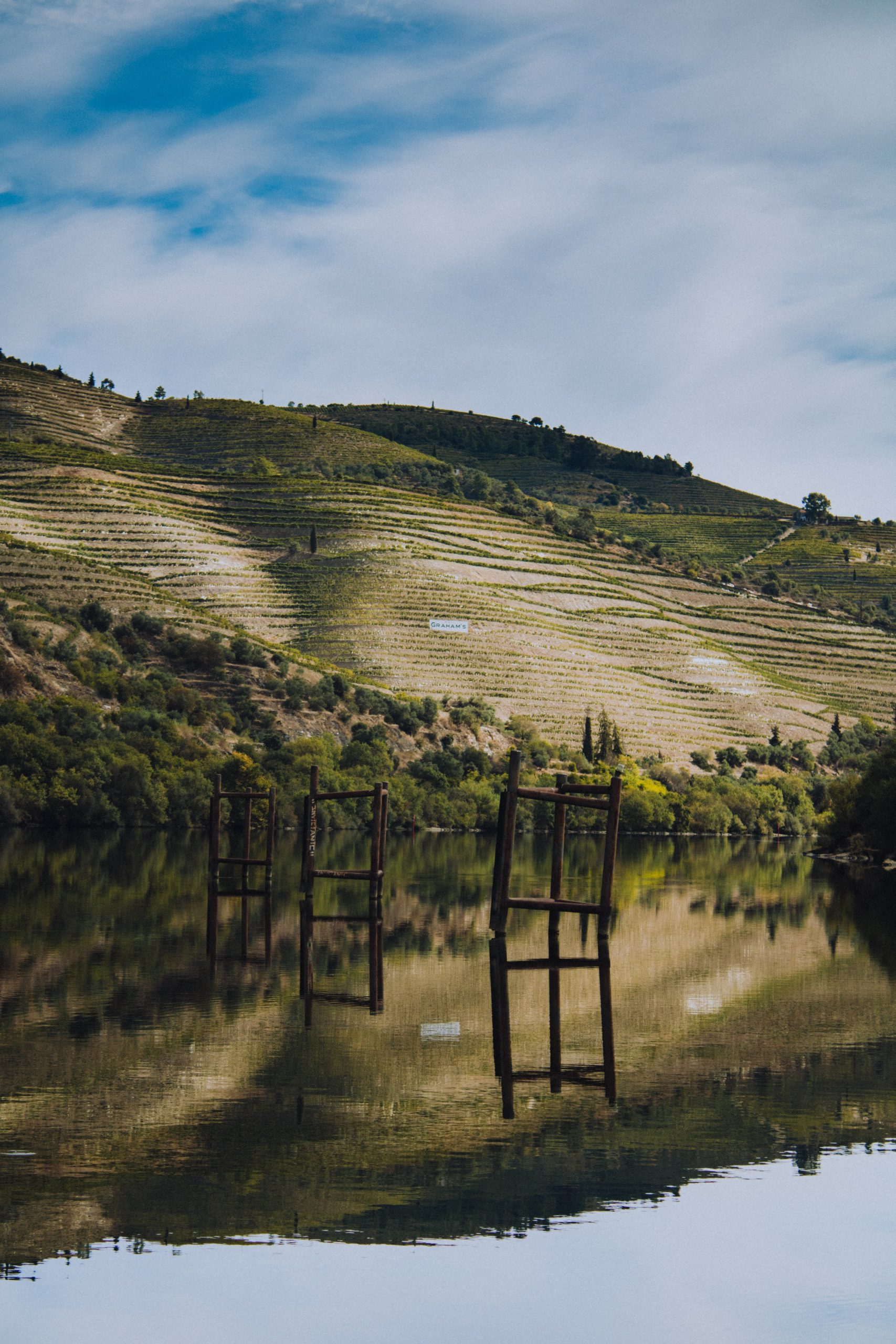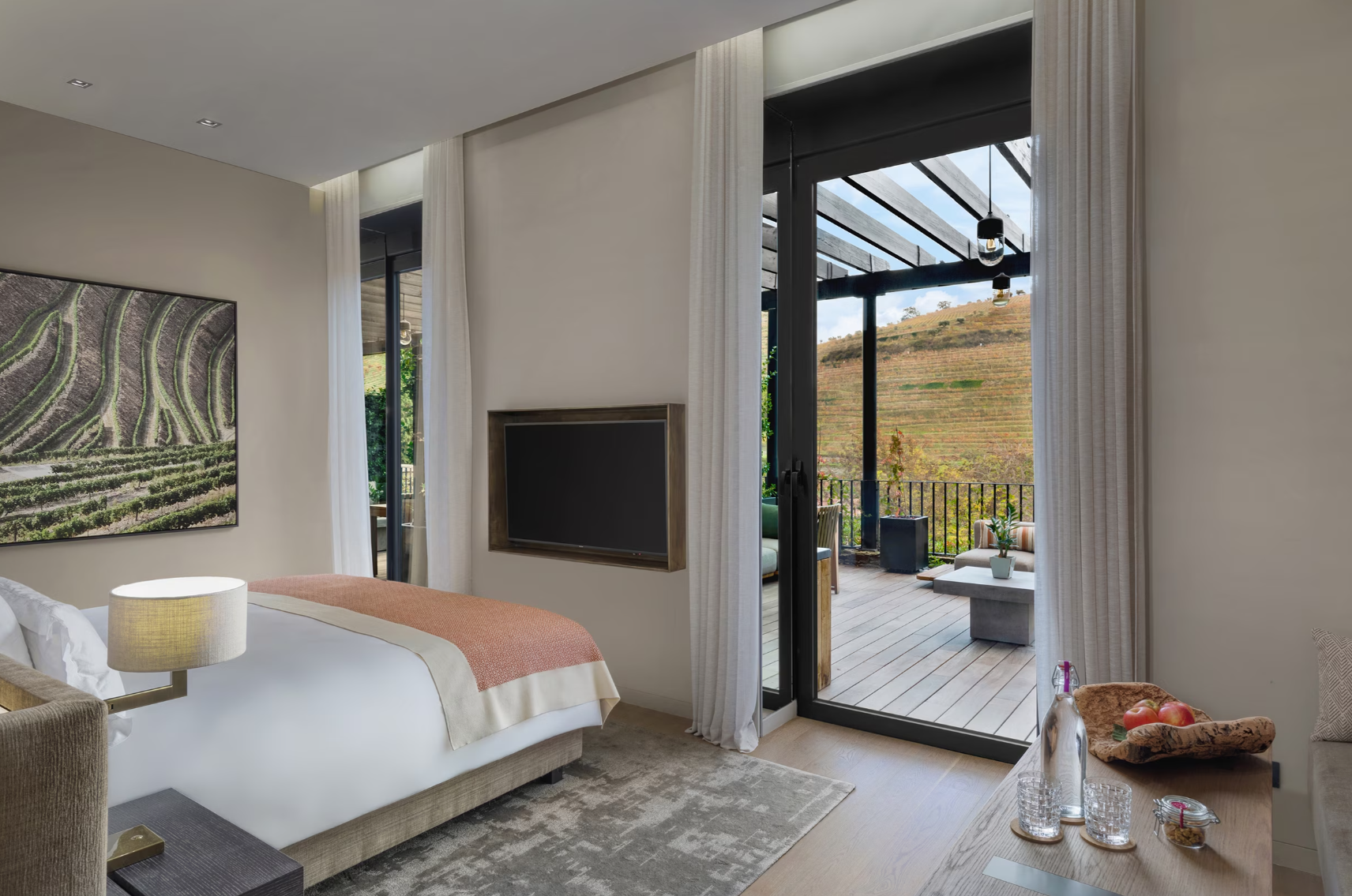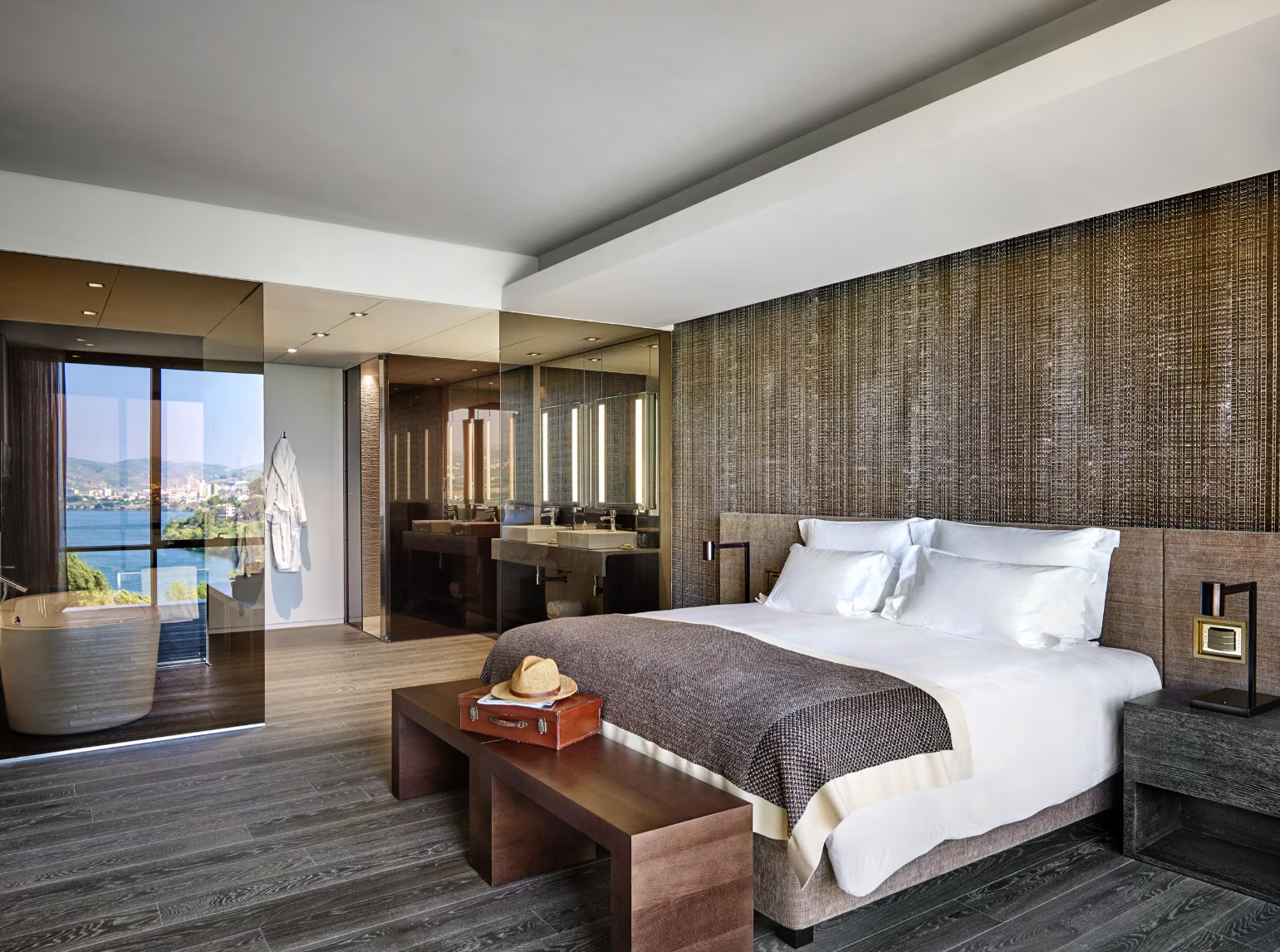Away from the big tourist magnets, the unspoilt beauty and cultural richness of the Alto Douro, the oldest protected wine-growing area and the home of Port wine, will surprise you. The wine landscape of the Alto Douro is probably unique in the world. The travelogue here around the Vinho do Porto begins with a legend and ends with a glass of port wine. And so we look at the almond trees on the slopes of the Douro. They are said to have been planted by a Portuguese prince for his Moroccan wife. Because she suffered from homesickness and longed for the sight of the snow-capped Atlas Mountains, which she had known since her childhood. From then on, every year during the weeks of the almond blossom, she saw some white on the slopes of the Douro. Whether this satisfied her longing is not known. What is certain is that the landscape along the Douro was created by human hands. Terraces upon terraces as far as the eye can see. All bricked by hand. Often barely two meters wide. Many are around 1000 years old. Not only do they bear vines, but also olive and almond trees. A feast for the senses!

Auf den ersten Blick mag das mal enge, mal weite Tal des Douro an den Mittelrhein oder die Mosel erinnern. Doch bei genauerem Betrachten offenbart sich ein rauer, fast archaischer Charme, den man von heimischen Weinhängen so nicht kennt. Schließlich wurde hier schon in der Bronzezeit ein Gärtank aus Trauben hergestellt, lange bevor die Römer den eigentlichen Weinbau einführten. Und so verwundert es kaum, dass ausgerechnet hier der vielleicht größte Exportschlager Portugals erfunden wurde: der Portwein.

You can’t taste it, but it’s true: the history of port wine began with stress. In the nineteenth century, the English no longer received wine from the French. But because they didn’t just want to drink tea, they bought from the Portuguese from then on. The low-yielding but high-quality grape varieties from the slopes of the Douro were already known far beyond the region at that time. The disadvantage for the English, however, was that the transport was now more laborious and, above all, much longer, because the wine had to be transported by ship or cart to Porto, where it was loaded onto English merchant ships. Due to the rough seas, the wine fermented on the way to England and became undrinkable. In the port of Matosinhos, a solution was sought and experimented with brandy as an additive. From then on, the wine on board did not tip over. The cellar mixture convinced the spoiled tongues of the Anglo-Saxons right away. They christened the liqueur-like brandy mixture with a sweet note Port wines: Vinho do Porto. In retrospect, it was a brilliant idea to stop the fermentation process by adding brandy. The result was a drink whose unfermented residual sweetness apparently also met the taste of the English on their rainy island. And from here it began its triumphal march around the world. Whether for dessert or as an aperitif, port wine is still drunk all over the world today. A resounding success, therefore, even if red wines are increasingly being produced in the Alto Douro again today due to the change in demand.


There is no question that those who come here stay longer than one or two nights. Because there is a lot to discover. And in general, time seems to pass more slowly here than elsewhere. Jochen Ziesel knows the area. For years, he has been running the Columbus travel agency , which offers tailor-made trips to people who want to see something of the world or simply need a break. This is where those who are looking for something special come here. Sometimes it can be a small guesthouse, sometimes a luxuriously equipped winery. Jochen Ziesel recommends Six Senses in the municipality of Lamego. Perched on a hillside overlooking the terraced vineyards of the UNESCO World Heritage Site of the Douro Valley and the Douro River, the recently renovated 19th-century mansion offers guests therapeutic spa oases, wine tastings and an outdoor infinity pool with mirror effect. In the hotel’s wine library, wine connoisseurs (or those who want to become one) will find more than 750 references to wines from the region, curated by two wine directors, as well as a selection of tapas and cheeses to match the wine tastings. The hotel’s Vale Abraão restaurant offers gourmet cuisine and international delicacies in three different areas, including an open kitchen, a wood-fired oven and fine dining.



In addition to exploring the countryside, the traveler can also take a trip from the water. Thanks to numerous locks, the Douro is navigable throughout the 200 kilometres from Porto upstream to Barca d’Alva. But not only small boat tours are possible. Jochen Ziesel from the Columbus travel agency recommends a cruise, upstream to Régua or further to Pinhão with A-Rosa Cruises.

A ride on the enchanting Linha do Douro, the regional train that opened in 1878, is also charming. Real steam locomotives and old-fashioned wagons are still in use here. Freight traffic from Régua to Porto has of course been handled by modern trains for decades. But if you want, you can still go on a real journey through time here. From June to September, there are special trips with the steam locomotive. An experience for nostalgics and, of course, for children.
However, if you want to get an idea of the vastness and originality of the Alto Douro, which consists of much more than just picturesque vineyards, Jochen Ziesel recommends an exploration tour in your own car (or rented from Sixt). The tour is breathtaking. It leads over the highlands to close to the Spanish border and back again on the south side of the Douro. From Peso da Régua we walk on the north side of the river through a cultural landscape that paradoxically has something wild and barren. Here and there, scattered whitewashed quintas, lie scattered on rolling hills. It is worth stopping in Pinhão, where there are numerous wineries around the town. In the village itself, there is a small train station richly decorated with azulejos (hand-painted ceramic tiles).
We continue in the direction of the district town Vila Flor, to German Blumenstadt. Every year in early summer, the Terra Flor Festival and several other events attract visitors with culinary and alcoholic delicacies from the region. In addition to the obligatory wine, you will mainly find organically produced olive oil from the Trás-os-Montes region (DOP). If you want to spend the night, you can try your luck in one of the few guesthouses. But perhaps you are better off with the somewhat outlying and quite attractive Turismo Rural, the Portuguese version of the ever-popular Agro-Turismo. Or you can have Jochen Ziesel from the Columbus travel agency reserve a place to sleep.

Many kilometers further on, the N222 connects Vila Nova de Foz Côa with the Douro and leads us back to Pinhão via São João da Pesqueira. On this route, Jochen Ziesel recommends a detour to the Quinta do Vesúvio. The ambitious viticulture team of the Quinta still works in a very traditional way, without modern technology. If you don’t believe that, you can watch how the grapes are pounded with bare feet for the mash production. The Quinta do Vesúvio is full of stories and memories of times gone by. Today, their wines and port wines enjoy an almost legendary reputation worldwide. By the way, a wine tasting can be easily combined with lunch on the stately terrace of the Quinta. That’s why we love the simple and at the same time cultured life in Portugal. Precisely because it is more diverse than Tuscany, not as kitschy as the Loire or as lovely as the Moselle Valley. Reason enough to sit back and enjoy a port wine. Thanks to Jochen Ziesel!
You will find Jochen Ziesel personally on site at his Columbus travel agency in Bahnhofstr. 7 in Waiblingen. You can reach him by phone at: +49 7151 958880 and by email: info@reisebuerocolumbus.de
EDITOR’S PICK:
Portugal, France, Spain or Portugal – the wine recommendations at GO SIXT will take you into wonderful wine worlds.